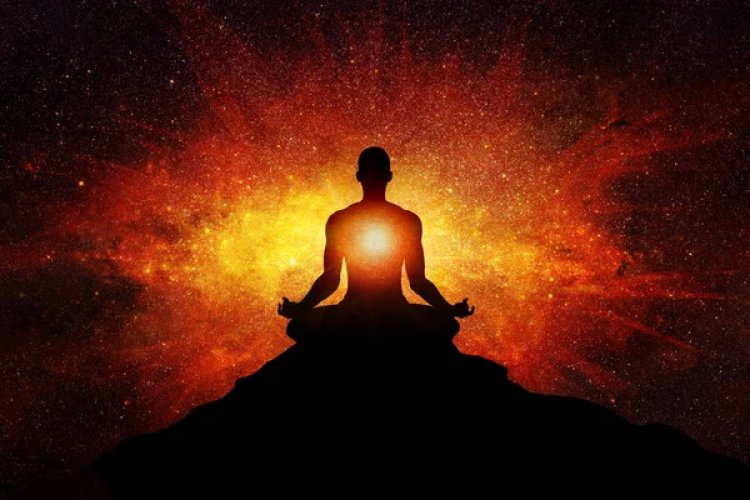The Spiritual Side of Yoga
Practicing yoga will eventually lead to spiritual fulfillment, a state of great bliss. Learn more for The Spiritual Side of Yoga.

The Spiritual Side of Yoga: While the majority of people engage in yoga training for its physical advantages, the practise of yoga has numerous other advantages. Yoga is profoundly entrenched in spirituality, and many of the postures have more profound purposes than simply stretching and strengthening the muscles. Yoga's holistic influence enables practitioners to better not only their physical strength and flexibility, but also their emotions, mentality, and concentration.
This ancient science transcends the merely physical by strengthening the bond between the mind, body, and most importantly, the spirit. The spiritual aspect of yoga can assist yogis in achieving inner integration and oneness with the Supreme Consciousness. And it all begins with the body and postures or asanas.
As evidenced by the numerous Sanskrit and English terms for asanas (postures) that are derived from animals and plants and refer to their unique characteristics or qualities, such as Lotus, nature and the environment that surrounds us are fundamental to yoga. Aside from these, some receive their inspiration from the earth, while others have primordial spiritual origins. However, each name has a concealed significance.
Lets discuss for The Spiritual Side of Yoga.
The Spiritual Side of Yoga
Padmasana – Lotus Pose
In the ancient traditions of Asia, the lotus flower is often a symbol of purity and “spontaneous” generation, representing divine birth, spiritual development and creation itself. A lotus flower is on a journey from its roots embedded in the muddy waters, stemming upward, emerging into the light and blooming into the beautiful flower we know it to be. Symbolically it represents the perfection of the human being, who is with her body or “roots” in the world (like the roots of the lotus in the mud of the lake), but with her mind dwelling in the Divine, such as the lotus blooming above the surface of the water. When the lotus pose is perfected one attains complete detachment which is symbolized by the petals of the lotus flower. When splashing water onto the lotus petals, the droplets will roll off the petals and will never stick to them. Similarly the yogi will not remain attached to anything in the world even though he is “drenched” with the water of the world.
The Lotus Pose is the regular seated meditation posture yogis assume for meditation and pranayama (breathing exercises). Breath is an energizing and purifying aspect for the human body. Deep, slow breathing energizes and purifies our bodies. Yoga practice helps us tune into our self, allowing us to discover our true nature and exquisite potential.
Viirabhadrasana – Warrior Pose
Yogic philosophy has it that one’s biggest enemy is self-ignorance. Being ignorant or not fully aware of yourself can cause intense suffering for yourself and others. The Warrior posture allows one to embody the idea of courage, bravery and strength necessary to face your own inner demons – overcoming ego and ignorance.
The 3 primary Warrior poses in yoga all involve strong extended legs pressing into the ground, powerfully extended arms and an active, engaged core. The Warrior posture helps your body develop not only physical strength, but also the spiritual readiness for the inner battles that the mind and heart must wage and win.
Balasana – Child’s Pose
It seems to be one of the simpler poses, yet there is more to the child’s pose than meets the eye. In this pose, you kneel on the ground with your legs tucked underneath, your torso resting on the thighs, arms by your side or stretched forward and palms resting on the floor. This posture symbolizes and intensifies your connection to the childlike attitude of surrender.
The goal of this exercise is to be in a state of non-doing, especially important if you are tense, highly-strung or stressed out. This posture is about creating a shell of quiet tranquility, allowing the spirit to rest and nurture itself, removed from external pressures. The emphasis on proper breathing in this posture further strengthens the connection between mind and body, inducing a state of calm awareness that helps you to fully relax. You allow yourself some quiet time for your mind, heart and body to integrate, resulting in a state of deeply satisfying wholeness.
Vrkshasana – Tree Pose
A popular asana practiced in yoga, the objective of the Tree Pose is to achieve balance. However, in this instance balance is not achieved in a rigid manner, but much like a tree. Your foot stays rooted in the ground while your body may gently and almost imperceptibly sway, like a tree does in the wind. The freedom of movement coupled with balance and being rooted develops the spiritual acceptance of your body’s firm, yet transient position in the world.
Shavasana – Corpse Pose
Most yoga sessions end with Shavasana, or the “Corpse Pose.” It’s a relaxation pose, performed while lying on your back with your eyes closed and your arms extended alongside your body. This asana requires your body to be completely still so your mind can be drawn inward, allowing you to indulge your inner self without any distractions, be it movement or thought.
The spiritual aspect of the posture invokes surrender, giving up one’s intentions, goals and worldly pursuits in acknowledgement of the fact that there is a sense of completion and peace to be found in mere stillness and tranquility. It’s important to remember that the yogic version of death is seen as the culmination of one’s life, making it highly important for all. This posture mimics death in a manner that helps you prepare for the inevitable end that awaits us all. And to prepare you knowing that death is a state of utter relaxation, as if relaxing into one’s own Self. There are three ways to relax: physical relaxation, when the body is still and the muscles fully relaxed, mental relaxation, when the mind is unruffled by thoughts and emotions and finally, spiritual relaxation, when the mind merges in the inner spiritual Self.
Also read: The Best Time To Practice Yoga
Final Thoughts
A good yoga practice is one that allows its practitioners to achieve peace – with themselves and the external world they inhabit. The spiritual aspect of yoga emphasizes the attainment of peace and clarity of mind, while perfecting the posture is of secondary importance.
When we practice yoga with a spiritual outlook, we acknowledge that the end purpose is transformation and awakening of our true Inner Self. Awakening of Self means realizing our highest potential. Realizing our hidden potential allows us to express the fullness of our divine essence and to thereby make the greatest possible contribution to the world.
Practicing yoga with this ultimate objective will eventually lead to spiritual fulfillment, a state of great bliss. The practice of yoga aimed at total integration includes a certain lifestyle, the practice of compassion and kindness, a vegetarian or vegan diet, and all of this plays an important role in the fulfillment of the above objective.














